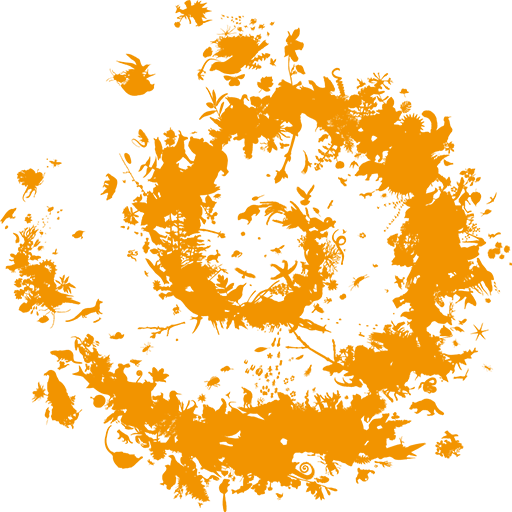
Canayère
8 points of interest

Trèves - nathalie.thomas  History
HistoryTreves
In Antiquity, the village square was a cemetery. The name Trèves is believed to derive from the Gaulish trebo – meaning 'village' according to some sources or the Celtic water goddess according to others – or perhaps from trivium, crossroads... The track going over the Roman bridge at Le Trévezel, restored in the 18th century, was in fact an important road in Antiquity. There is another hypothesis if you consult Boissier de Sauvages' 1820 dictionary, in whose opinion Treva or Trebo are Occitan words referring to phantoms or spirits. You might well be tempted by this version once you know the history of the Pas de Joulié cave described below! (B. Mathieu)

Buis - © Nathalie Thomas  Know-how
Know-howBox (Buxus)
Boxwood and humans: a long relationship! When livestock farming increased, the primeval oak forest opened up and box – which is too hard for sheep's teeth – took hold everywhere. Humans discovered one of its major qualities: broken up and scattered over the ground as a litter, it protects vegetable seedlings from drought and frost. Its leaves can make up for a lack of straw for fertilising arable land. In 1818, a decree issued by the prefect of the Gard department worried about the excessive clearing of box groves and the messy manner in which they were being uprooted, without adequate tools. Until about 1910, you might see mules laden with enormous bundles of box; then chemistry took over. (B. Mathieu)

© Fonds Flahault  History
HistoryThe hamlet of Espruniers
This hamlet, which consisted of a sizeable grouping of houses, was inhabited until about 1930. You have stopped on what was probably the threshing floor for grains.
Polystic - © Yves Maccagno  Geology
GeologyThe schist/limestone contact zone
Here, the layers of the schist outcrops are almost vertical in places. This contact between Causses and Cévennes, between the primary bedrock and the limestone layers, is due to a geological fault created by the various movements and constraints that have affected the Earth’s crust. In this zone, the schist bedrock has been pushed upwards by several hundred metres along the fault line compared to the limestone plateau, although the latter is less old.
Capillaire - © Valère Marsaudon  Flora
FloraCalcifugous vegetation
This section of the path in the schist zone showcases calcifugous (“limestone-avoiding”) vegetation, which only grows on acid soils (schist or granite): especially chestnut trees, ferns, heather and broom.
Canayère - nathalie.thomas  History
HistoryCanayère
A former farm turned forester's house in 1880. In the early days of the Mont Aiguoal reforestation, forestry officers lived here year-round during their missions. Forestry workers working on the replanting were allowed to use the outbuildings. Later, only one official resided here. Since 1967, no official has permanently lived here. (B. Mathieu)

pins noirs - © Sud Cévennes  History
HistoryA recent forest
The stands that were planted during the large reforestation programmes of the late 19th century onwards consist of black pines, a rustic species that is well-adapted to dry limestone soils. Underground, the Causses plateaux are characterised by networks of tunnels and cavities that have been created by water movement over millions of years. Subterranean rivers are blocked by the impermeable layers of the valley floor and flow into the Trévezel instead.
Crâne d'ours - © M. Delor  Archaeology
ArchaeologyJoulie Cave
In March 1952, Jolly, a forestry official, showed his friend Frayssignes this cave. Deposited in it they discovered the remains of 300 humans from the Neolithic, who had been carefully laid out side by side. The cave was rapidly declared a historical monument. In the depths of the cave, a great number of bear bones was also found. This cave bear, the ancestor of our brown bear (Ursus spelaeus), had a skull 50 cm long! In the winter, groups of these bears would have huddled together in clay wallows at the rear of the caves. Ursus artos succeeded the cave bear and was succeeded in turn by the brown bear, which was hunted to extinction in the 15th century. (B. Mathieu)
Description
Signposts will guide you all along this route. In the description below, the signposted place names and/or directions are given in bold italics between quotation marks:
Starting at "Trèves - Mairie", follow "La Vierge", then "Le Pas du Coulet" and "Canayère". From there, make for "Trèves" via "Valat d'Espruniers", "Réservoir du Villaret", "Le Villaret" and "La Vierge".
This walk is taken from the guidebook Massif de l’Aigoual, published by the Communauté de communes Causses Aigoual Cévennes as part of the collection Espaces Naturels Gardois and the label Gard Pleine Nature.
- Departure : Trèves
- Arrival : Trèves
- Towns crossed : Trèves
Forecast
Altimetric profile
Recommandations
Make sure your equipment is appropriate for the day's weather conditions. Remember that the weather changes quickly in the mountains. Take enough water, wear good shoes and put on a hat. Please close all gates and barriers after yourself.
Information desks
Tourism & national parc'house
Col de la Serreyrède, 30570 Val d'Aigoual
The Maison de l'Aigoual houses the tourism office Mont Aigoual Causses Cévennes and the Maison du Parc national. This visitor centre provides information on and raises awareness of the Cévennes National Park, its sites and events as well as the rules that must be observed in the National Park's central zone.
On site: changing exhibitions, video projections, Festival Nature events and shop Open year-round
Access and parking
From Camprieu, take the D 157 to Trèves
Parking :
Calculateur d'itinéraire Lio
Utilisez le calculateur liO pour organiser votre trajet en région Occitanie.
Autres régions
Calculez votre itinéraire en Auvergne Rhône Alpes sur Oùra
Biodiversité autour de l'itinéraire
Source

Report a problem or an error
If you have found an error on this page or if you have noticed any problems during your hike, please report them to us here:



